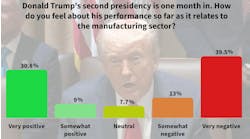I wrote this column in 2015 while working as a consultant on a supply management project for a major manufacturer. The client had initially brought in a mid-sized consultancy to lead it. Six months into their engagement, they hadn’t impacted either material or organizational costs. As a result, I was brought in. The quirk in this engagement was that the incumbent consultant was retained even as I started my work, which lead to some real interesting interactions. In the end, my one-man show produced significantly better results than those of the five-person team the consultancy had placed on site.
I need to be careful on how I approach this topic because, after all, I worked as an executive level consultant. Throughout my career, I’ve observed a significant number of consultancy engagements, and unfortunately they have often led to disappointing outcomes. As a result I feel somewhat obligated to write a sort of consultant caveat emptor column.
My favorite joke about consulting goes something like this: A consultant is someone who—when asked by a client, “What time is it?”—grabs the client’s arm, rolls up their sleeve, reads them the time off of their Timex and then submits a Rolex-sized invoice.
I hope my clients didn’t feel this way about my services, but you never know. My favorite movie that touches on business consulting is Office Space —not the TV series but the actual 1999 movie with Jennifer Aniston and Ron Livingston. If you haven’t already seen it, I’d highly recommend you do. Those of you who know the movie will understand me when I say that I’ve observed a number of consultants who operated in a similar manner to the two in the movie, i.e., Bob Slydell and Bob Porter—the Bobs—who had been hired by Ron Livingston’s idiot boss, Bill Lumbergh, to “right-size” the company.
The bottom line on consultants should be based on the overall long-term impact their recommendations and actions have on client business that otherwise wouldn’t have occurred. That being said, there are definite “buyer beware” red flags about the services you receive that you can use in real time to judge whether your consultants are up to the task.
In my experience, consulting firms tend to employ people who have no real-world know-how about purchasing other than, perhaps, through their trips to the grocery store, etc. Sure, I guess that was a cheap shot. However, in my mind, it is warranted. Further, I’ve observed that those consultants who can cite a procurement background have rarely held positions of functional authority. Consequently, for them to appear even semi-proficient in supply management, they need to operate within a fairly rigid framework, i.e., a predefined “cookie-cutter” type construct. When consultants rely on such a structure, the outcomes of their engagements end up looking pretty much the same, regardless of specific client needs.
I once had the opportunity to talk to two companies that had engaged the same consulting firm. Both engagements had followed the exact same cookie-cutter script and—believe it or not!—produced almost identical organizational and process outcomes. That might be understandable if there had been even some level of similarity in the state of procurement between the two companies—or the businesses they were in—but their situations couldn’t have been more different.
Red Flag #1: If the consultancy you’ve hired appears to be working from and holding to a predefined cookie-cutter-like script, they are likely not up to the task of tailoring a solution to the specific needs of your company.
Most cookie-cutter consulting processes are based on completing implementation prior to actually moving forward with changes. This pretty much ensures that you will need to engage the consultancy for months or even years before you can start evaluating whether what they are recommending will actually benefit your company and align with its culture. What a deal!
I’m a simple man. I enjoy working on crossword puzzles. No kidding. The key to solving just about any crossword is starting with the shorter (i.e., easier) words and, in doing so, gain insight into the longer, more difficult ones. For instance I always start by looking through the clues for the three- and four-letter words since I can usually figure out a fair percentage of them. Their solution sets me up for solving clues for the longer words that run crosswise to them.
I’ve found that in just about any consulting engagement, a good analogy can be made to the approach I use in working crosswords. There are usually low-risk quick hit actions that can be moved forward on even during a period of initial overall evaluation. Some call this type of thing “the low-hanging fruit”—sort of like the three-and four-letter words in a crossword puzzle.
I once worked with a company that had significant fastener requirements. In initially walking through the factory it was obvious they had a problem with excess fastener inventory. I quickly verified the inventory they had “on hand” exceeded their annual usage needs. In other words, they weren’t very good at managing fasteners.
To address this problem, there was no need to first help this company define their supply management mission/vision; metrics; strategies; organizational structure; job descriptions, etc., before putting out a Request-for-Quote for a vendor-managed fastener inventory program that had the potential to save the company huge amounts in investment, piece-price and operational costs. Quick-hit, low-hanging fruit projects can be used to evaluate whether your consultant knows what he’s talking about without having to wait for the rollout of their entire “program.”
Red Flag #2: If the consultancy you’ve hired does not point out and address low-hanging fruit savings opportunities that can be acted on immediately, you may want to step back from them.
Getting back to the movie, in a management role I once actually had to work with an “efficiency expert” consultancy that operated much like the two Bobs in “Office Space.” At the time, I had already seen the movie and consequently almost started laughing when it became apparent that the process they were going to use in evaluating my people’s productivity was almost identical to that applied in the movie.
I guess I must have appeared somewhat dubious of the process, since early on I was visited by their boss, the president and owner of the consulting firm. Without any pre-notice, this guy walked in my office, closed the door and asked me whether or not I was going to be a “team-player.” He actually threatened to torpedo (his word) my career with the senior executive from my company who had engaged his firm if I didn’t appear more enthusiastic about his people’s upcoming interaction with my group.
Paul Ericksen's columns are part of IndustryWeek's Supply Chain Initiative.
I felt like I was living outtakes from Office Space. I won’t tell you the name of the consulting firm, but will say it sounded a lot like “shredder” which, in retrospect, is pretty appropriate. Anyway, about six months after the “shredders” had completed their “right-sizing” initiative, our factory found it necessary to bring back many of the same people who had lost their jobs, only this time as “temps.” Except for the senior company executive who had brought the consultants in—our version of Bill Lumbergh—who (rumor had it) got a performance bonus for reducing our factory’s full-time employee head-count, the entire engagement was a waste of over a million dollars.
Red Flag#3: If, after watching the movie, you find you’ve retained a consultancy that operates like “Bob and Bob,” watch out!
I don’t have an advanced degree, so I guess I’m a little sensitive about people thinking they can get an MBA and become instant experts in any subject. Over my career, I’ve had the opportunity to manage a lot of MBA graduates and haven’t really seen them differentiate themselves in performance from my other less-credentialed employees. On the other hand, I don’t completely discount advanced degrees if they are combined with hands-on experience.
Supply management relies heavily on savvy and personal interactions, not just data analysis, so it’s a functional area where if you haven’t actually “walked-the-walk,” you really can’t have much of a command on what’s needed to be effective. I once had an argument with a consultant from another firm in front of a common client about what was the proper organizational structure for a Supplier Development organization we were proposing. My background includes having established and managed several such groups. In fact, if you ask “people that know,” I was recognized in industry as an expert in Supplier Development. When I asked what experience the other consultant’s recommendation was based on, it came out that the person I was arguing with had never worked in—much less managed—a Supplier Development group. Must have read about it in business school!
Red Flag #4: If the consultancy you’ve hired has people with significant procurement work experience, you’ve got a shot at getting good outcomes. On the other hand, regardless of academic credentials, if your consultancy has relatively no procurement track record to point to, not-so-much.
Commodities, Redux
As a final caution, watch out for consultancies that emphasize managing commodities rather than managing suppliers. In consultant-ese, “commodity management” is code for “applying leverage.” Because of this primary focus, you’ll find some consultants who want to consider just about everything a commodity. Why? In my mind it’s an easy approach—yet can be damaging in the long term—for people without a deep grasp of the inner workings of supply management and what should be considered a commodity and what shouldn’t.
Red Flag #5: As a rule, supply management requires a lot of spade work—there are generally no “silver bullet” strategies. If your consultant implies that leverage is such a solution, they are probably trying to sell you a form of snake-oil elixir. Don’t buy it.
Paul Ericksen is IndustryWeek’s supply chain advisor. He has 40 years of experience in industry, primarily in supply management at two large original equipment manufacturers.




